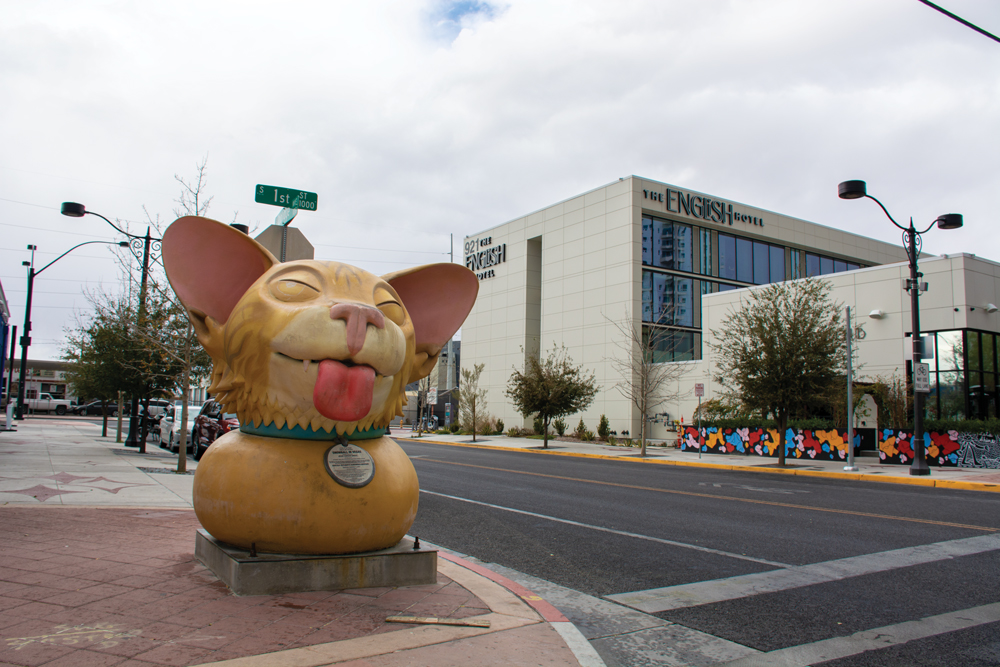Bet on Art
Fall 2023
Rediscover Nevada’s biggest city at the Las Vegas Arts District.
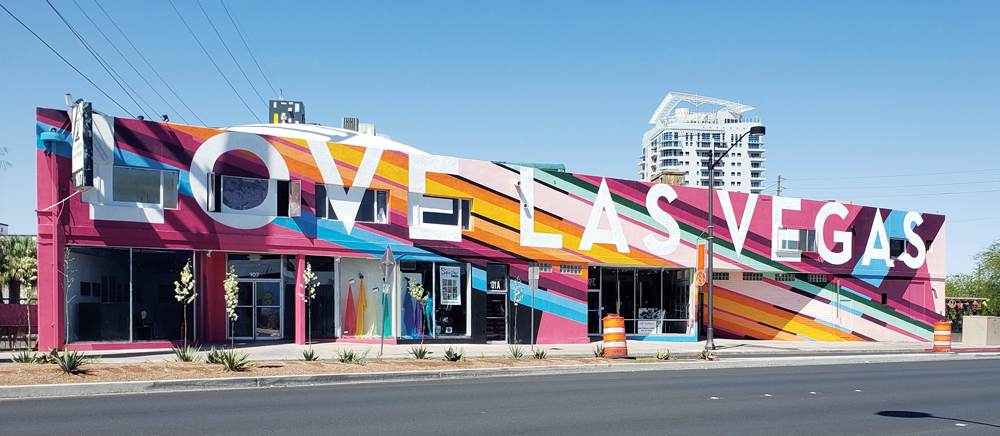
Las Vegas is in the middle of an urban cultural renaissance. A well-timed combination of affordable living, supportive city policies, and grassroots community planning has made the city a stronghold for creative expression. At the heart of this movement sits the Las Vegas Arts District and its 18-plus blocks of colorful shops, novel restaurants, and endless entertainment.
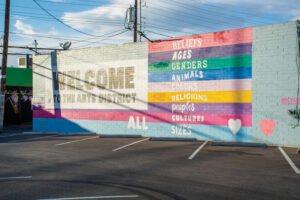 NUEVA LAS VEGAS
NUEVA LAS VEGAS
The Strip is one of the best known—and visited—landmarks in the world, but there is so much more to Las Vegas than its resort-packed playground. The past 20 years have seen stunning transformation of the surrounding cityscape, and many off-Strip attractions are now part of almost every itinerary. But the city’s changes are more extensive than casual visitors might appreciate.
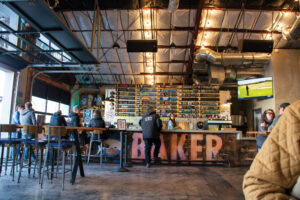
In the 1990s, Las Vegas began revitalizing its historic downtown. In 1995, five blocks of luminous canopy were built over Fremont Street—the city’s original main street. 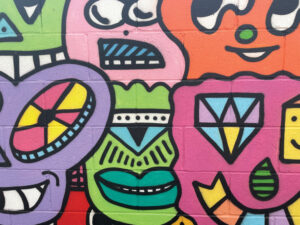 In 2012, public and private entities raised more than $750 million for 57 downtown projects ranging from sidewalk improvements to entirely new attractions like the Downtown Container Park—a startup incubator—and the DISCOVERY Children’s Museum.
In 2012, public and private entities raised more than $750 million for 57 downtown projects ranging from sidewalk improvements to entirely new attractions like the Downtown Container Park—a startup incubator—and the DISCOVERY Children’s Museum.
The core of Las Vegas was reborn. Today, when visitors finish their stroll down Fremont Street, they find themselves in a hip neighborhood with motels-turned-boutique malls, indie bars, and a prevailing atmosphere of refurbished retro that harkens back to the city’s glitzy past. Downtown’s second life was making headlines, but it was only part of the story. A dozen blocks away, another neighborhood was getting a very colorful makeover.

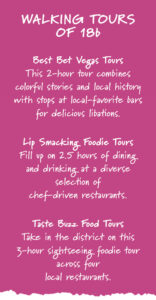 BLANK CANVAS
BLANK CANVAS
In the 1980s, what is now the Las Vegas Arts District was largely abandoned. After WW2, the neighborhood was a prosperous industrial center home to auto shops, metalworks, and manufacturing plants. However, as the city grew and locals relocated to the suburbs, the blue-collar district stagnated.
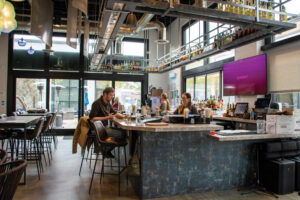
Community leaders knew something had to be done, but finding developers to renovate dilapidated warehouses and rusted factories proved challenging. Fortunately, there is one career path traditionally into that sort of thing. In 1998, the Arts District—also called 18b for its 18-block area—was born, and entrepreneurs and artists were invited to set up whatever enterprise they could imagine. With the prospect of low rents and relaxed zoning laws, many answered the call.
The district grew around the centrally located Arts Factory—a commercial warehouse-turned studio space. Abandoned storefronts became studios, restaurants, and galleries. Long-disused sidewalks became popular promenades for local window-shopping. And behind it all, a community of like-minded bohemians worked collectively to solve problems, promote one another, and experiment with new ventures.
By the 2010s, the neighborhood had experienced remarkable change. It had also turned Las Vegas into a significant artist enclave. Like Portland or San Francisco before it, the district’s mildly decrepit aesthetic invoked limitless potential.
 ART TOWN
ART TOWN
The Arts District’s Main Street is an eclectic mix of vintage shops, art galleries, breweries, tattoo shops, and dive bars. Excursions on side streets reveal niche boutiques, performance spaces, and enough cultural cuisine to satisfy a seasoned gastrotourist.
 It might go without saying, but art is everywhere: it’s neatly arranged in upscale galleries, plastered to café walls, and waiting inside vintage cigarette vending machines-turned-impromptu art shops that dispense an original piece for just a couple bucks.
It might go without saying, but art is everywhere: it’s neatly arranged in upscale galleries, plastered to café walls, and waiting inside vintage cigarette vending machines-turned-impromptu art shops that dispense an original piece for just a couple bucks.
There are still many remnants of the district’s industrial past. Adjacent to the new are abandoned lots, tire shops, and shuttered factories with broken windows. But the postindustrial remnants can’t help but complement the district’s originality. At the very least, they serve as a reminder of where the neighborhood came from. And all the buildings—decaying and refurbished—are illuminated with works that range from commissioned murals to city-approved feral art.
 Visitors can easily find their fill of dining and Las Vegas adventures within the now-21 block area. There are even non-resort lodgings within walking distance. Younger guests can enjoy a collection of nearby community-oriented hostels, while discerning travelers will enjoy a pampered stay at the ENGLiSH Hotel, featuring Todd English’s restaurant, The Peppa Club.
Visitors can easily find their fill of dining and Las Vegas adventures within the now-21 block area. There are even non-resort lodgings within walking distance. Younger guests can enjoy a collection of nearby community-oriented hostels, while discerning travelers will enjoy a pampered stay at the ENGLiSH Hotel, featuring Todd English’s restaurant, The Peppa Club.
The best time to visit is the first Friday of the month for an event (efficiently) called First Friday. This long-standing monthly festival draws thousands of visitors to the grounds surrounding the Arts Factory for food, drink, live music, visual performances, and artists showing off their creations. Preview Thursday happens the day before, allowing serious art lovers to mingle with artists and browse without the crowds.
